Spike Lee: Creative Sources
Spike Lee, 2023. (Photo:©JamelShabazz)
The Brooklyn Museum Presents a Major Exhibition Exploring the Creative Sources of Celebrated Filmmaker Spike Lee.
Spike Lee: Creative Sources is an immersive installation that takes visitors into Lee’s world, revealing the people, places, and ideas that have inspired his incisive storytelling
The Brooklyn Museum is proud to present Spike Lee: Creative Sources, a rare glimpseinto the world of Spike Lee (born Atlanta, Georgia, 1957; raised in Brooklyn, New York), one of the most influential and prolific American directors, who has transformed the landscape of contemporary cinema and the art of filmmaking. Through an immersive installation of objects that have been touchpoints in his creative process, visitors will discover the sources of inspiration that have fueled Lee’s work. Organized around themes of Black American history and culture, Brooklyn, sports, music, cinema history, and family, the exhibition draws connections between the people, places, and ideas behind his creative endeavors. It also marks Brooklyn’s first major exhibition on Lee, an artist whose persona is synonymous with the borough.
Spike Lee as Mookie in Do the Right Thing (Spike Lee, 1989, 120 min.). (Photo: © David C. Lee)
Lee is best known for his work in film, having directed, written, and produced numerous movies, commercials, music videos, and recorded plays over the past forty years. His personal collection, also formed over decades and previously on view in the Academy Museum of Motion Pictures’ exhibition Director’s Inspiration: Spike Lee (2021–22), mirrors the themes that recur in his filmmaking. The Brooklyn Museum’s exhibition offers visitors a new lens through which to understand how Lee’s lifelong interests have intersected and impacted his productions. It is organized by Kimberli Gant, Curator, Modern and Contemporary Art, with Indira A. Abiskaroon, Curatorial Assistant, Modern and Contemporary Art, Brooklyn Museum.
“Spike Lee: Creative Sources offers a fresh perspective on a cultural icon, focusing on the individuals and influences that have shaped Spike Lee’s body of work, which is so well known today,” says Gant. “By making Lee’s collection accessible to the public, this showcase celebrates his legacy while honoring his deep connection to Brooklyn, a place that has been an integral part of his storytelling.”
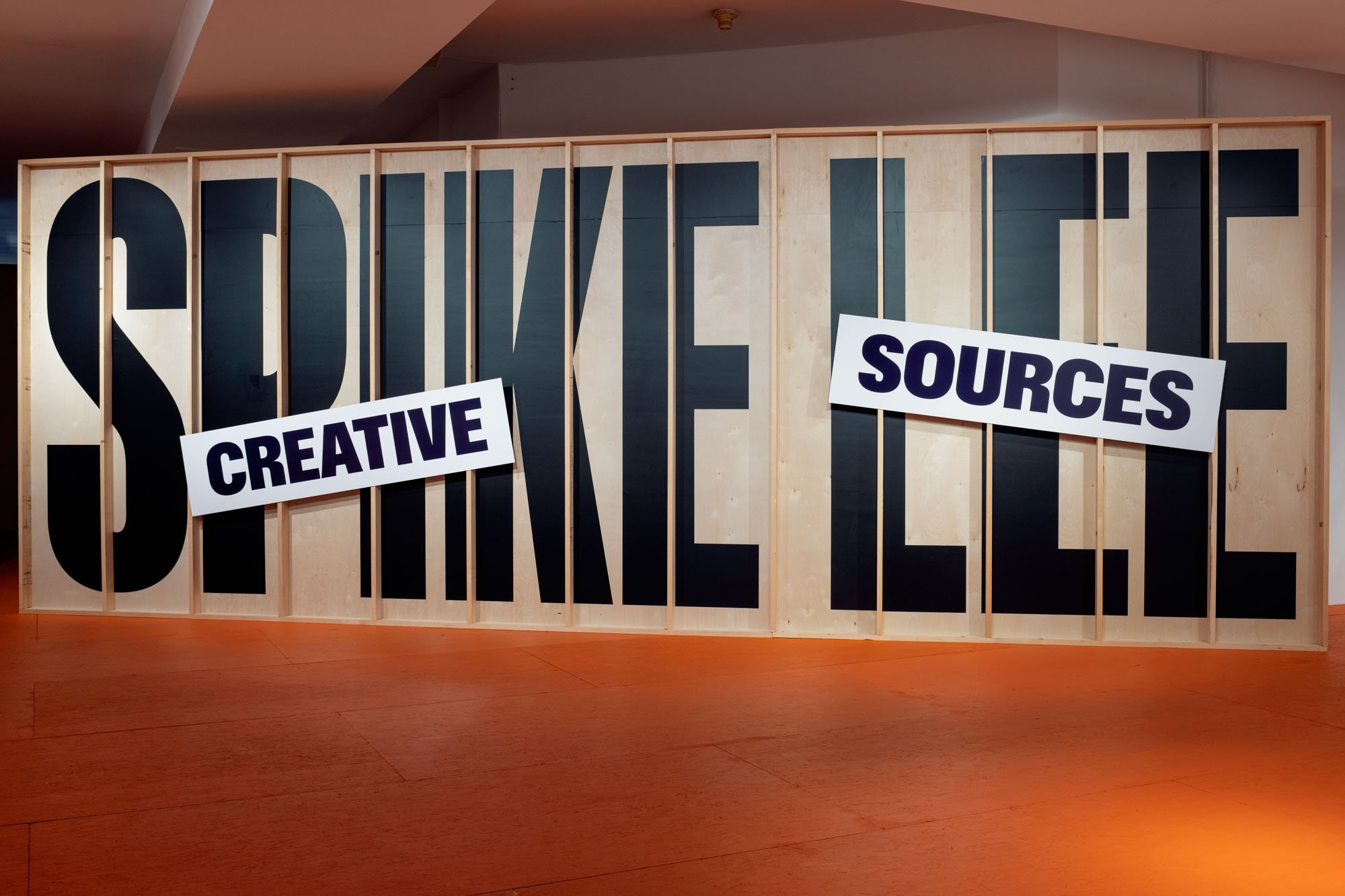


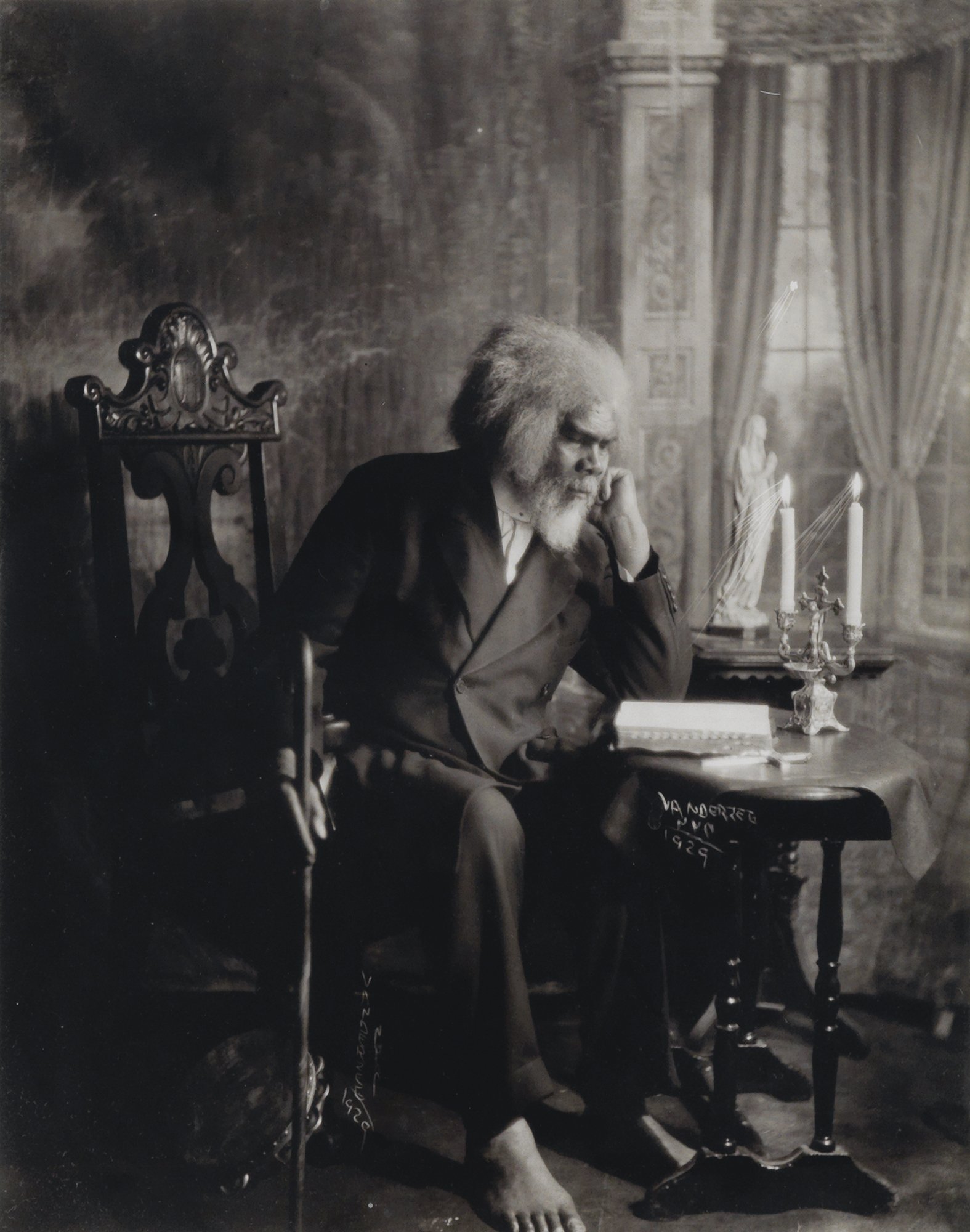
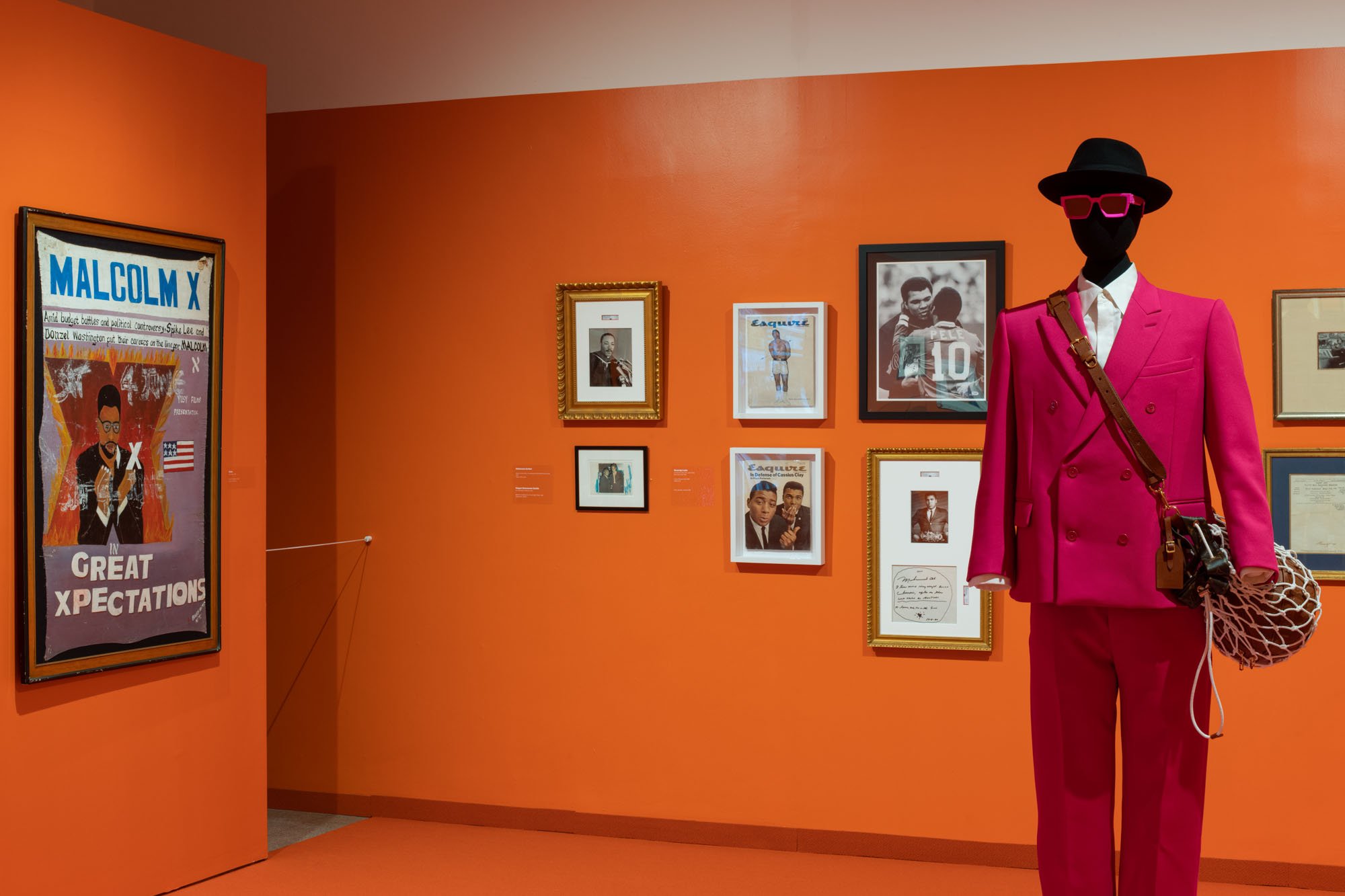




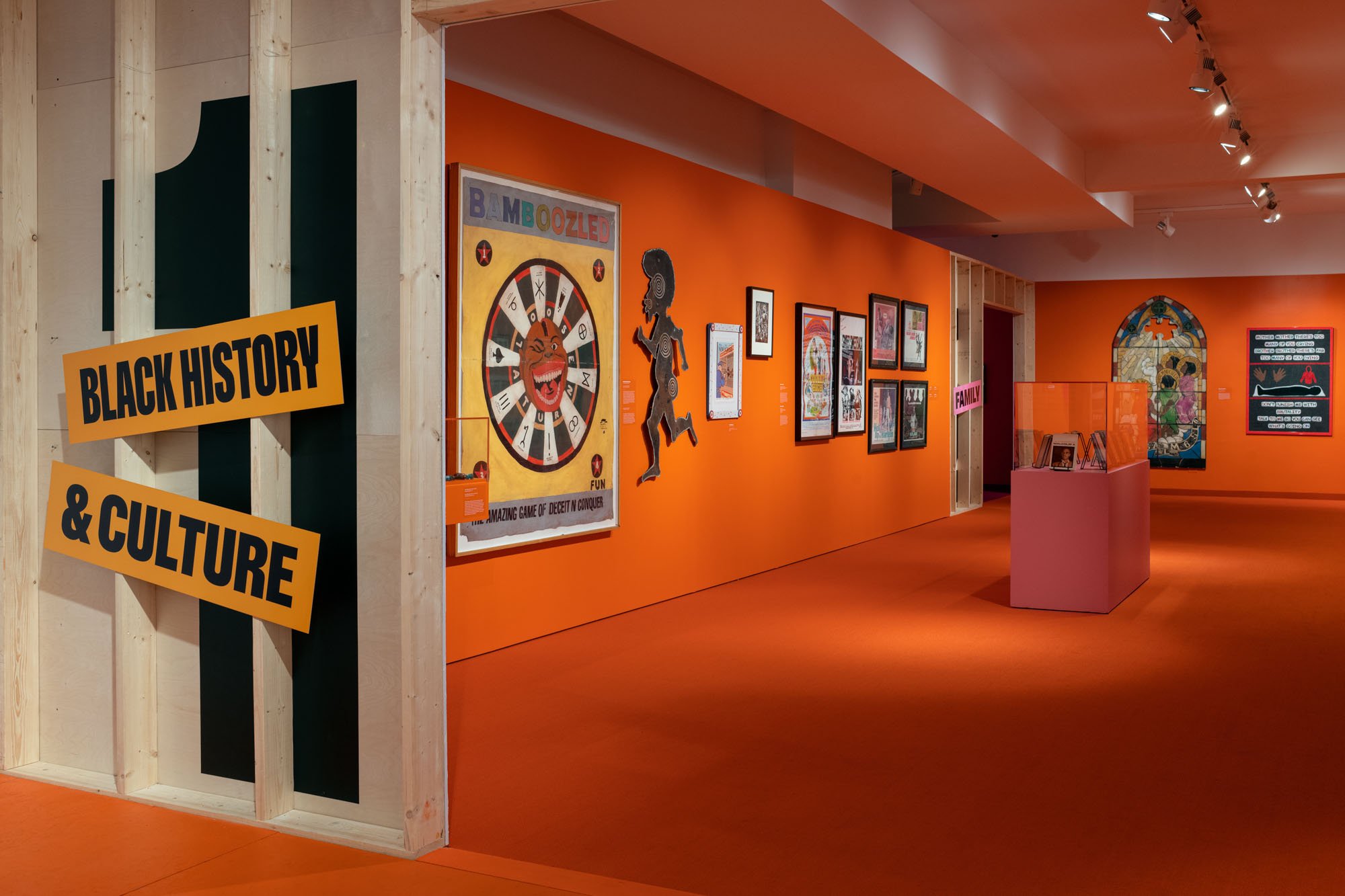
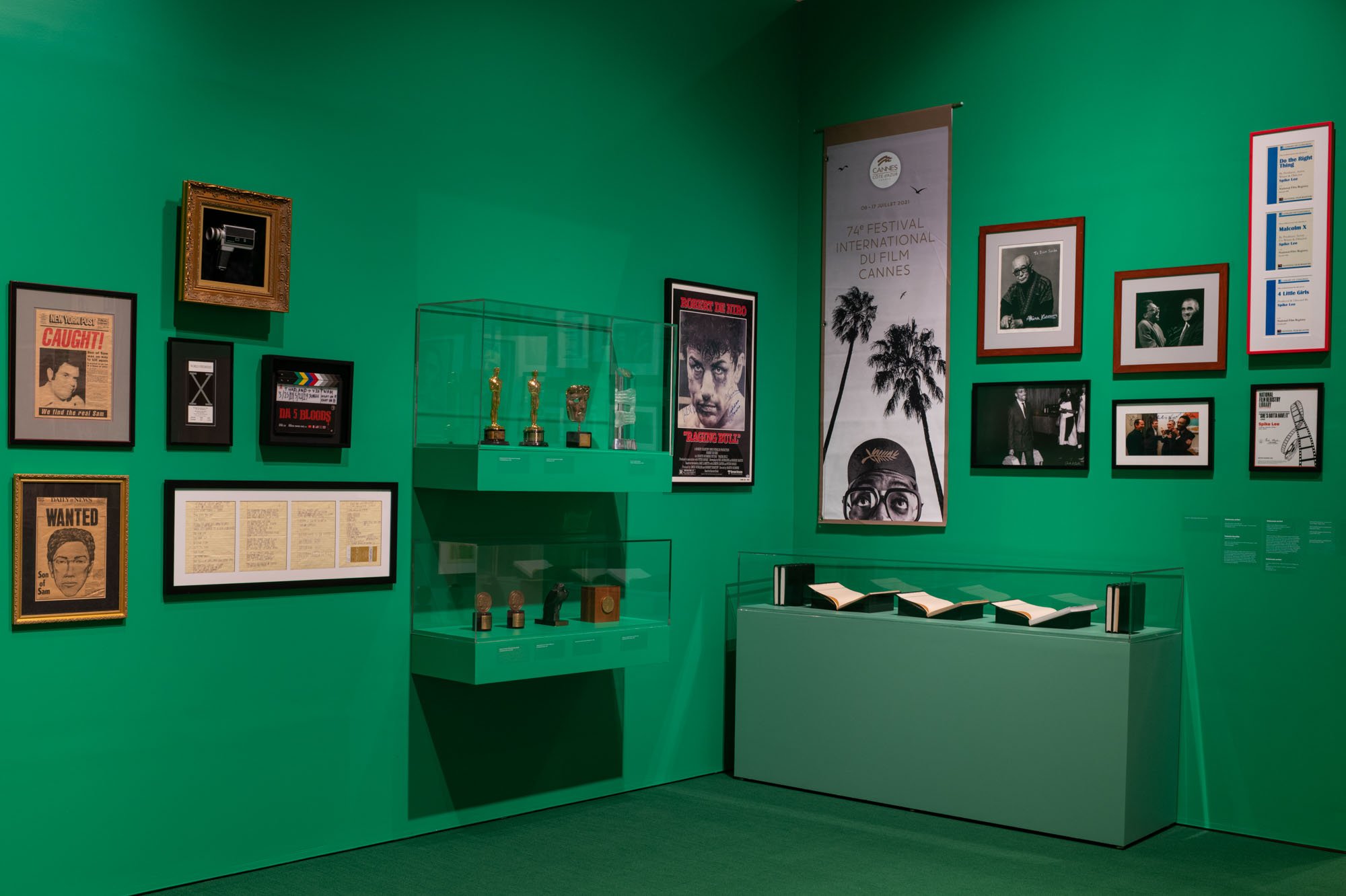
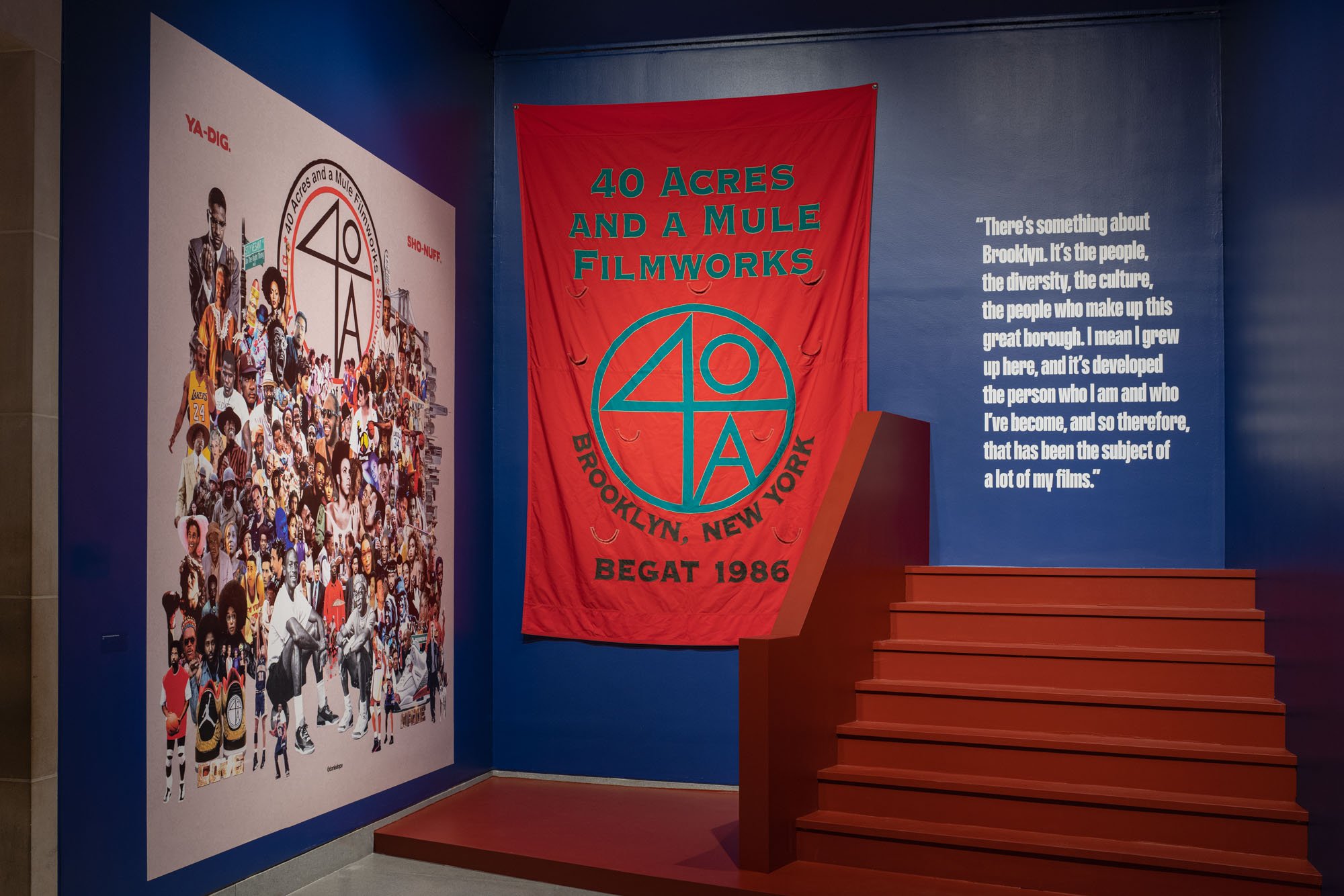
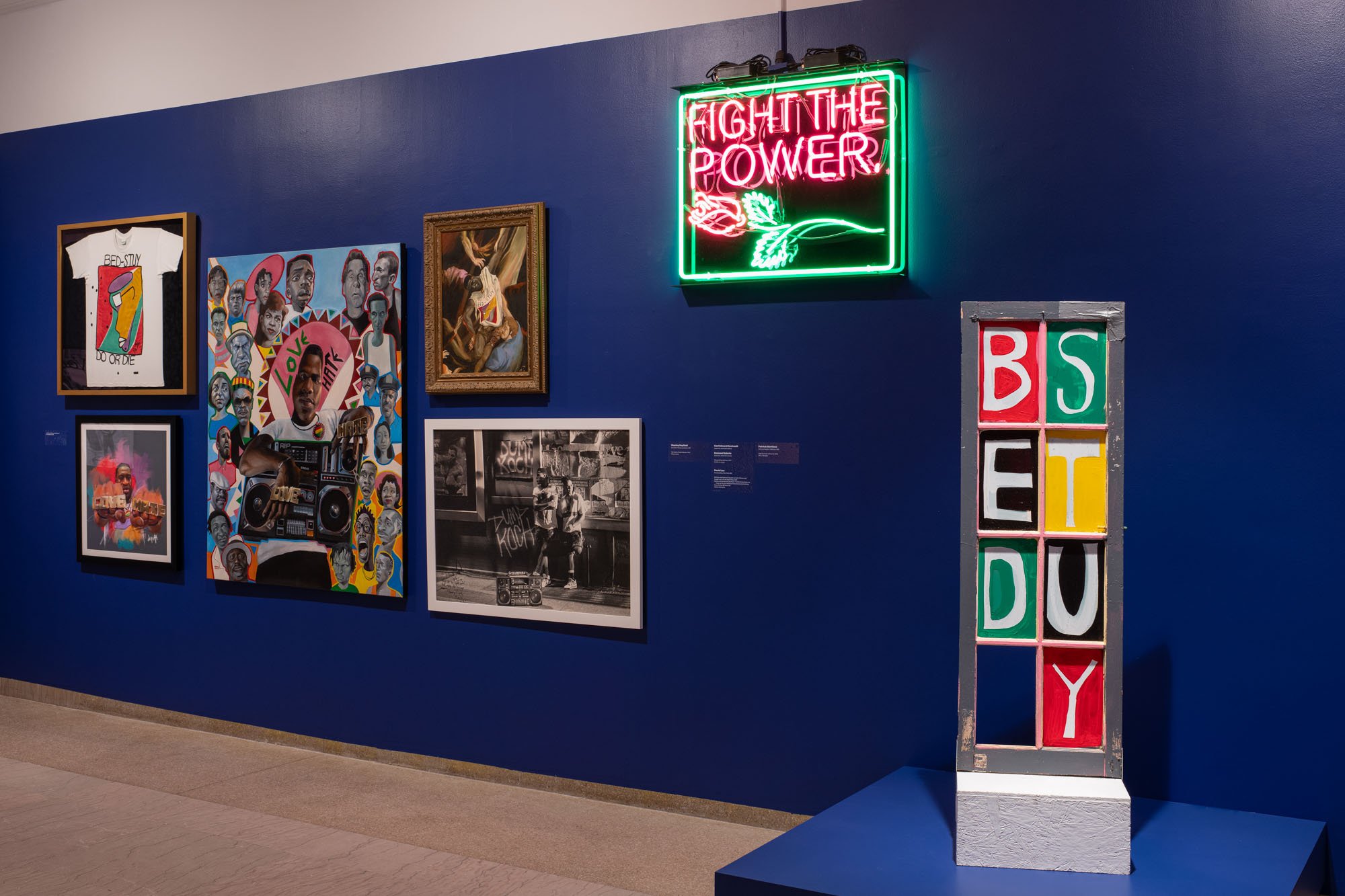

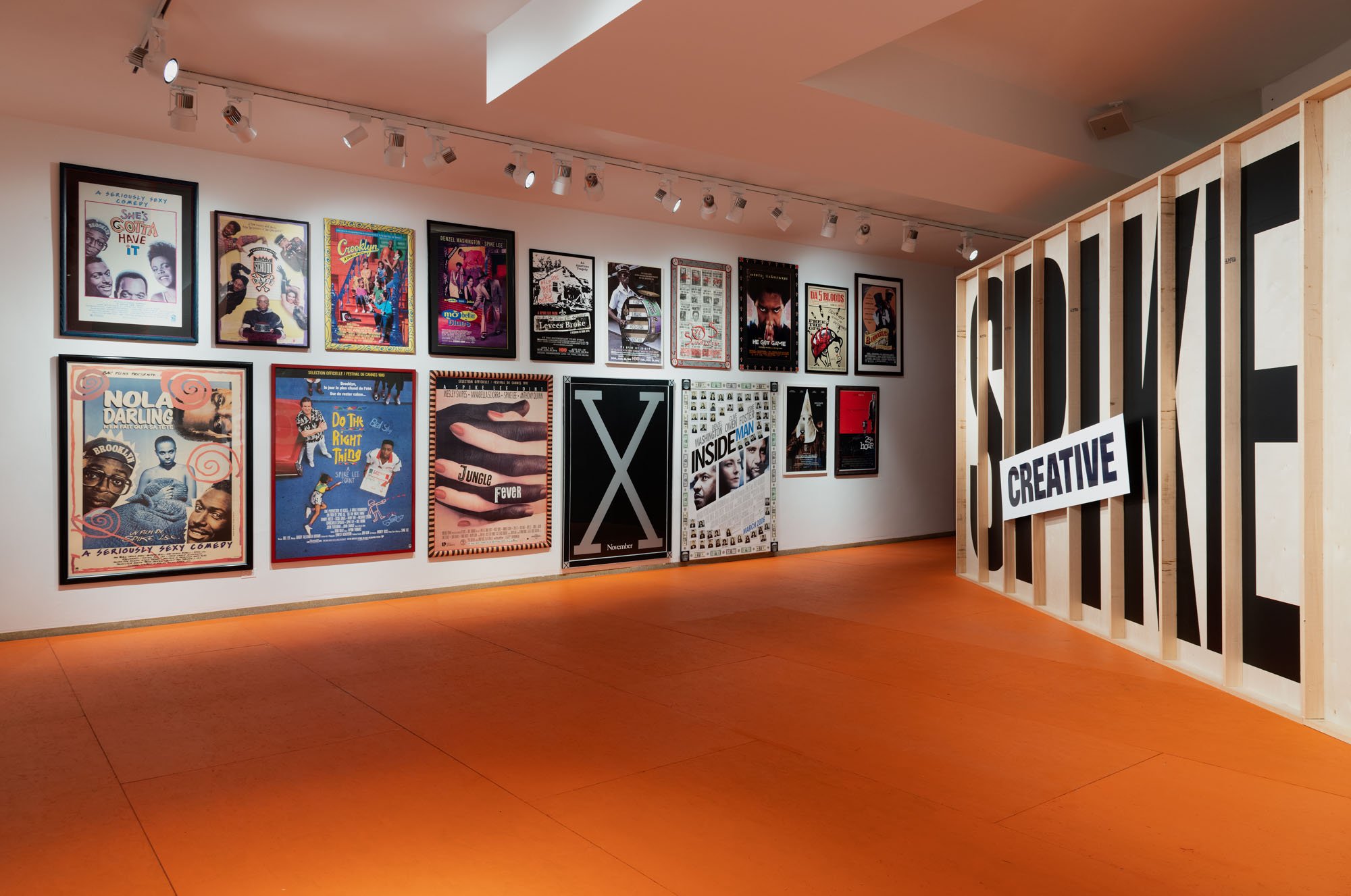
Installation view, Spike Lee: Creative Sources: Brooklyn Museum, October 7, 2023-February4, 2024. (Photo: Paula Abreu Pita, Danny Perez))
More than 350 objects represent the wide range of mediums that have inspired Lee, such as historical photographs, paintings, album covers, movie posters, letters, first-edition books, costumes, and film memorabilia (many of which are autographed and signed to the director). They are organized thematically in seven sections, each of which features a clip from one of his groundbreaking films. Shown throughout the exhibition are works by prominent Black American artists, including Kehinde Wiley, Deborah Roberts, Elizabeth Catlett, Michael Ray Charles, Gordon Parks, and James Van Der Zee. Also on view are depictions of Black American and African figures across a spectrum of disciplines, such as Nelson Mandela, Barack Obama, Shirley Chisholm, Angela Davis, Toni Morrison, Ella Fitzgerald, Billie Holiday, Malcolm X, Jacob Lawrence, Gwendolyn Knight, Joe Louis, Jack Johnson, Michael Jordan, and Prince—all of whom have made an impact on Lee.
Known for creating complicated and often controversial depictions of Black Americans, Lee is strongly influenced by Black American history and culture, which is highlighted in a primary section of the exhibition. Michael Ray Charles’s satirical artwork Bamboozled (1997) depicts a dartboard with the face of a Black American winking and smiling widely, despite the deep wound cleaved into the figure’s head. Representing the racist stereotyping of Black Americans, the painting helped inspire Lee’s provocative film Bamboozled (2000), a critique of minstrelsy and blackface. Other objects in the section, such as images of Harlem and of public figures Lena Horne, Jacob Lawrence, and James Baldwin, weave a narrative about self-expression, community, and activists who condemned segregation and sought to build a better world.
A Brooklyn icon, Lee has centered the borough and other New York City locales in many of his films, and he has collected and preserved artifacts from Brooklyn’s rich history. In turn, the exhibition examines the ways that Brooklyn has shaped Lee creatively. The section about Brooklyn presents photographs by David Lee (Spike Lee’s younger brother) and Tseng Kwong Chi; movie posters; and set dressings and props from Lee’s Brooklyn- based films, such as Do the Right Thing (1989) and She’s Gotta Have It (1986). These works are displayed alongside banners and posters for Lee’s Brooklyn-based film company 40 Acres and a Mule, named after the broken promise that the U.S. government made to formerly enslaved people at the end of the Civil War.
Spike Lee as Mars Blackmon from She’s Gotta Have It (Spike Lee, 1986, 84 min.). (Photo: © David C. Lee)
Lee’s collection also contains numerous works that celebrate the historical feats of Black athletes. On view in the sports section is a commissioned painting by Kehinde Wiley that honors the legacy of Brooklyn Dodgers player Jackie Robinson, the first Black American to play in Major League Baseball in the modern era. Also exhibited are tennis rackets that belonged to Arthur Ashe, the first Black American to win three Grand Slam singles titles, and Serena Williams, one of the greatest tennis players in history. In addition, the section features David Levinthal’s photographs of notable moments in sports history, starring toy figures of such heroes as Michael Jordan and Willie Mays.
Known for collaborating with renowned jazz musicians and hip-hop artists, Lee centers music as a distinctive component of his films. His love for music and musicals was passed down from his mother, Jacquelyn Shelton Lee, who frequently took him to musicals and plays, and his late father, Bill Lee, a jazz musician who wrote the score for several of his films. The section about music includes portraits of early to mid-twentieth-century musical luminaries, such as Gordon Parks’s photograph of composer Aaron Copland and James J. Kriegsmann’s photograph of Frank Sinatra. These works are displayed alongside instruments once owned by legendary musicians, such as Prince’s “Love Symbol” guitar and a saxophone signed by Branford Marsalis, who collaborated on the soundtrack for Mo’ Better Blues (1990).
Though he developed a distinct visual language and technique, Lee would not have become the creative powerhouse that he is today without the profound influence of other important filmmakers. The cinema history section presents photographs and vintage posters of films by his predecessors and contemporaries, such as Japanese director Akira Kurosawa and Italian director Federico Fellini, showcasing the range of work that inspires Lee.
Patrick Martinez (born 1980). Fight the Power (Chuck D) , 2018. Neon, Plexiglas. © Patrick Martinez. Collection of Spike Lee and Tonya Lewis Lee. (Photo: Michael Underwood. Courtesy of the artist and Charlie James Gallery, Los Angeles)
As seen since his earliest works, Lee makes films that are inherently political, often examining the everyday lives of Black Americans and the systemic inequities they contend with.
In the section on politics, World War II and Vietnam War propaganda posters featuring stereotypical imagery of Black American soldiers are displayed alongside posters of Lee’s Miracle at St. Anna (2008) and Da 5 Bloods (2020). Both films spotlight the treatment of Black American soldiers and emphasize the hypocrisy of making them fight alongside white counterparts and for the United States.
Behind the scenes of Crooklyn (Spike Lee, 1994, 115 min.). (Photo: © David C. Lee)
The notion of family, which has been important for Lee both on- and off-screen, forms a final section of the exhibition. Here, visitors will see photographic portraits of Lee and his siblings, parents, and grandparents, as well as artistic depictions of family by Elizabeth Catlett and William H. Johnson. Additional works on view include portraits of the actors, designers, writers, musicians, and other colleagues who have become part of Lee’s professional family and helped him realize his artistic vision through the decades. Spike Lee: Creative Sources is organized by Kimberli Gant, Curator, Modern and Contemporary Art, with Indira A. Abiskaroon, Curatorial Assistant, Modern and Contemporary Art, Brooklyn Museum.
Leadership support for this exhibition is provided by the Ford Foundation.
Major support is provided by Rolex.
The Brooklyn Museum gives special thanks to the Academy Museum of Motion Pictures, especially Dara Jaffe, Associate Curator.
The exhibit opened on the 7th of October with an artist reception. The exhibit will close—next year in February on the 4th. Please visit the Brooklyn Museum’s site for more information about the exhibit. The Museum can also be found on Instagram, TikTok, YouTube, and Facebook.




